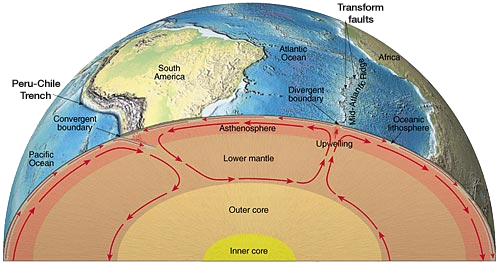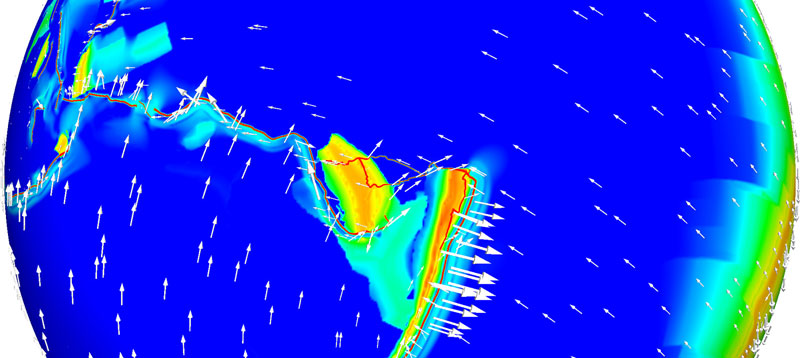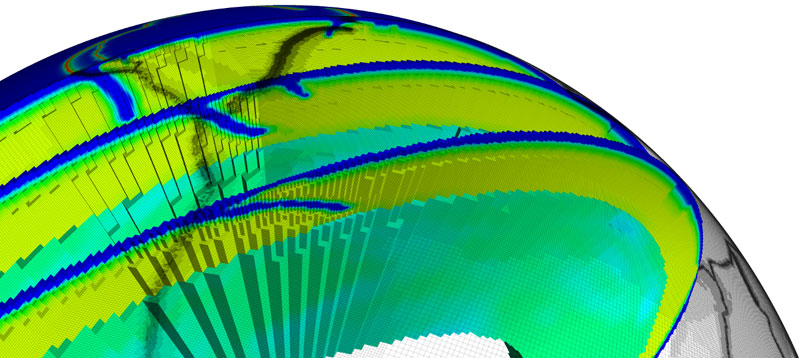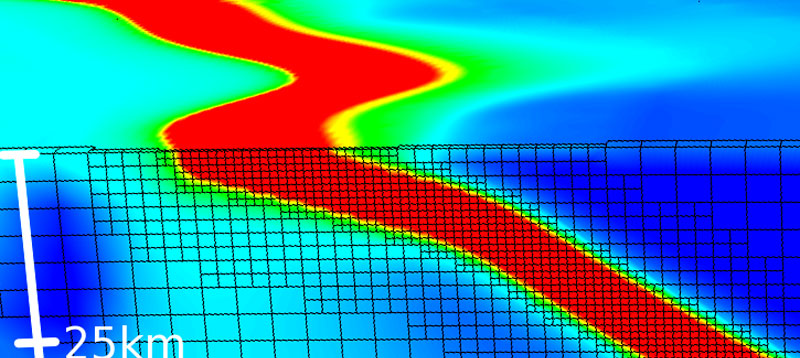Our simulations in this area deal with the development and application of computational models and simulations, tightly integrated with high-performance computing, to solve complex physical problems arising in engineering analysis and design (computational engineering) as well as natural phenomena.
In recent years, we have investigated common relevant phenomena such as the study of trailing vortices that form during aircraft takeoff and cause delays of several minutes between consecutive starts, therefore creating waiting queues during peak traffic hours.
Mantle convection and plate tectonics
Mantle convection is the thermal convection in the Earth’s upper 3000 km. It controls the thermal and geological evolution of our planet. Solid rock in the mantle moves like viscous incompressible fluid on time scales of millions of years. Mantle convention drives plate tectonics, earthquakes, volcanos and tsunamis.
High-performance computing is needed to determine whether the main drivers of plate motion are negative buoyancy forces or convective shear traction, and whether the key process governing the occurrence of great earthquakes are the material properties between the plates or tectonic stress.


What we know now
- We have accurate information on our planet’s current plate motion from GPS data.
- Topographay maps indicating traction normal to the Earth’s surface are available.
- The state of stress between plates and for slabs or subducted plates is known from earthquake data.
- Magnetic orientation in rocks, plants and animals provides historic plate motion data for past few 100 million years.
- Rock rheology data has been extrapolated from laboratory experiments on very different temperature, pressure and time scales.
- We have obtained contemporary images of the Earth’s structure by correlating seismic wave speeds with temperature.

What we want to find out
Here’s how high-performance computing will enable us to use known data together with models to better understand our planet.
- Are the main drivers of plate motion negative buoyancy forces or convective shear traction?
- What is the energy dissipation in plate bending zones? How strong is plate coupling?
- We endeavor to learn more about the Earth’s structure and history.
- The role of slab or subducted plate geometries is yet to be understood.

Challenges for parallel scalable solvers
- Severe nonlinearity, heterogeneity and anisotropy of the Earth’s rheology.
- Six orders of magnitude viscosity contrast and sharp viscosity gradients at plate boundaries.
- Wide range of spatial scales and highly localized features with regard to the Earth’s radius (∼6371 km): plate thickness ∼50 km and shearing zones at plate boundaries >5 km.
- Desired resolution of ∼1 km results in O(1012) unknowns on a uniform mesh of the Earth’s mantle. Therefore, adaptive mesh refinement is essential.
Video simulation
Gordon Bell Prize awarded for most realistic simulation of the Earth’s interior to date
Video credit: Greg Abram of the Texas Advanced Computing Center, The University of Texas at Austin
